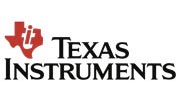Filter interviews by
Qualcomm RF Engineer Interview Questions and Answers
10 Interview questions
The area of an equilateral triangle inscribed in a circle can be calculated using the circle's radius.
The formula for the area of an equilateral triangle is (sqrt(3)/4) * a^2, where 'a' is the side length.
For a triangle inscribed in a circle, the side length 'a' can be expressed as a = r * sqrt(3).
Substituting 'a' into the area formula gives Area = (sqrt(3)/4) * (r * sqrt(3))^2 = (3 * r^2) / 4.
Example: If r = 2, t...
Sort an array of integers, removing duplicates to return distinct elements in increasing order.
Use a set to eliminate duplicates: e.g., [3, 1, 2, 2] becomes {1, 2, 3}.
Convert the set back to a list and sort it: e.g., sorted([1, 2, 3]) results in [1, 2, 3].
Return the sorted list as the final output.
Swap the first two digits of a hexadecimal string with the next two digits.
Identify the first four characters of the string.
Swap the first two characters with the next two characters.
Example: '1A2B3C' becomes '2B1A3C'.
If the string has less than four characters, no swap occurs.
Amplitude modulation (AM) and frequency modulation (FM) waveforms can be represented graphically.
AM modulation: The amplitude of the carrier signal is varied in proportion to the amplitude of the modulating signal.
FM modulation: The frequency of the carrier signal is varied in proportion to the amplitude of the modulating signal.
Waveforms can be drawn to show the variations in amplitude or frequency over time.
AM w...
What people are saying about Qualcomm






S-matrix is a mathematical representation used in RF engineering to describe the relationship between input and output signals of a linear system.
S-matrix is also known as scattering matrix.
It is used to analyze the behavior of RF circuits and systems.
S-matrix elements represent the complex amplitudes of the incident and reflected waves at each port of a network.
S11 parameter represents the reflection coefficient ...
A standing wave in a transmission line is a wave that appears to be stationary, resulting from the interference of two waves traveling in opposite directions.
A standing wave is formed when a wave traveling in one direction reflects back upon encountering an impedance mismatch in the transmission line.
The interference between the incident and reflected waves creates regions of constructive and destructive interfere...
Different types of analog modulation schemes can be found in various communication systems.
Analog modulation schemes are used in radio broadcasting, television transmission, and wireless communication.
Some common types of analog modulation schemes include amplitude modulation (AM), frequency modulation (FM), and phase modulation (PM).
AM is used in AM radio broadcasting, where the amplitude of the carrier signal is...
Propagation delay is the time it takes for an electromagnetic wave to travel from one point to another.
Propagation delay is determined by the distance between the two points and the speed of light.
It is the time it takes for the wave to propagate through a medium or free space.
Propagation delay can be calculated using the formula: delay = distance / speed of light.
For example, if the distance between two points is...
A transmitter and receiver are essential components of a communication system.
Transmitter converts information into a suitable form for transmission.
Receiver receives the transmitted signal and converts it back into the original form.
Transmitter typically includes a modulator, power amplifier, and antenna.
Receiver typically includes an antenna, demodulator, and audio or video output.
Example: In a radio communicati...
Modulation is the process of varying a carrier signal to transmit information. Different types include AM, FM, PM, and QAM.
Modulation is used to transfer information by varying a high-frequency carrier signal.
Amplitude Modulation (AM) varies the amplitude of the carrier signal to encode information.
Frequency Modulation (FM) varies the frequency of the carrier signal to encode information.
Phase Modulation (PM) vari...
Qualcomm RF Engineer Interview Experiences
3 interviews found
I applied via Referral and was interviewed in Dec 2023. There were 3 interview rounds.
(1 Question)
- Q1. What is modulation, and what are the different types of modulation schemes.
- Ans.
Modulation is the process of varying a carrier signal to transmit information. Different types include AM, FM, PM, and QAM.
Modulation is used to transfer information by varying a high-frequency carrier signal.
Amplitude Modulation (AM) varies the amplitude of the carrier signal to encode information.
Frequency Modulation (FM) varies the frequency of the carrier signal to encode information.
Phase Modulation (PM) varies th...
(3 Questions)
- Q1. What is S-matrix?
- Ans.
S-matrix is a mathematical representation used in RF engineering to describe the relationship between input and output signals of a linear system.
S-matrix is also known as scattering matrix.
It is used to analyze the behavior of RF circuits and systems.
S-matrix elements represent the complex amplitudes of the incident and reflected waves at each port of a network.
S11 parameter represents the reflection coefficient at po...
- Q2. Where can you different types analog modulation schemes?
- Ans.
Different types of analog modulation schemes can be found in various communication systems.
Analog modulation schemes are used in radio broadcasting, television transmission, and wireless communication.
Some common types of analog modulation schemes include amplitude modulation (AM), frequency modulation (FM), and phase modulation (PM).
AM is used in AM radio broadcasting, where the amplitude of the carrier signal is vari...
- Q3. What is VSWR and what is the need for it?
- Ans.
VSWR stands for Voltage Standing Wave Ratio. It is a measure of how well a transmission line is matched to the impedance of the connected devices.
VSWR is a ratio of the maximum voltage to the minimum voltage along a transmission line.
It is used to measure the efficiency of power transfer and the impedance matching in RF systems.
A lower VSWR indicates better impedance matching and less power loss.
VSWR is important in RF...
(4 Questions)
- Q1. What is a standing wave in a transmission line?
- Ans.
A standing wave in a transmission line is a wave that appears to be stationary, resulting from the interference of two waves traveling in opposite directions.
A standing wave is formed when a wave traveling in one direction reflects back upon encountering an impedance mismatch in the transmission line.
The interference between the incident and reflected waves creates regions of constructive and destructive interference, ...
- Q2. Draw waveforms of Amplitude and FM/PM modulation scheme?
- Ans.
Amplitude modulation (AM) and frequency modulation (FM) waveforms can be represented graphically.
AM modulation: The amplitude of the carrier signal is varied in proportion to the amplitude of the modulating signal.
FM modulation: The frequency of the carrier signal is varied in proportion to the amplitude of the modulating signal.
Waveforms can be drawn to show the variations in amplitude or frequency over time.
AM wavefo...
- Q3. What is the propagation delay in Electromagnetic wave?
- Ans.
Propagation delay is the time it takes for an electromagnetic wave to travel from one point to another.
Propagation delay is determined by the distance between the two points and the speed of light.
It is the time it takes for the wave to propagate through a medium or free space.
Propagation delay can be calculated using the formula: delay = distance / speed of light.
For example, if the distance between two points is 100 ...
- Q4. Draw Transmitter and Receiver for a communication system.
- Ans.
A transmitter and receiver are essential components of a communication system.
Transmitter converts information into a suitable form for transmission.
Receiver receives the transmitted signal and converts it back into the original form.
Transmitter typically includes a modulator, power amplifier, and antenna.
Receiver typically includes an antenna, demodulator, and audio or video output.
Example: In a radio communication sy...
Interview Preparation Tips
- Communication Systems
- Transmission Line
- Signals and Systems
First Round was to judge engineering aptitude, i was asked general things and about my project. The interviewer was was very nice and friendly. A good experience overall.
Second round was a technical round questions from my projects and subjects like EMT and Communication systems was asked in great details. Friendly Interviewer, even though it was an interview I learnt a great deal. Again a very good experience.
Third Round was manager round. Again a technical round. Question asked from EMT and communication systems. The interviewer was not friendly at all, I felt like I was sitting in a college viva. The interviewer started every question with "Do you have any Idea about--" which I felt was berating and rude at least. While explaining things the interviewer interrupted me again and again and kept asking questions related to it which intimidated me. In the previous rounds of interview if I answered incorrectly or partially correctly the interviewer would ask me to rethink and give me sometime for the same. Here the interviewer would answer with "hmmm" again and again and move to the next question. Overall questions asked were from complete basics but I didn't have a good interview experience at all.
Reading previous interview experience for freshers, I was told I'd be asked for my preferred subject but that was not the case so an interviewee should be prepared for the worst.
(1 Question)
- Q1. Based on resume
(1 Question)
- Q1. About projects in resume
(1 Question)
- Q1. General questions on background
I appeared for an interview before Apr 2024, where I was asked the following questions.
- Q1. Given an array of integers, return the array with increasing order and distinct elements
- Ans.
Sort an array of integers, removing duplicates to return distinct elements in increasing order.
Use a set to eliminate duplicates: e.g., [3, 1, 2, 2] becomes {1, 2, 3}.
Convert the set back to a list and sort it: e.g., sorted([1, 2, 3]) results in [1, 2, 3].
Return the sorted list as the final output.
- Q2. Given a hexadecimal string swap first two digits with next two digits
- Ans.
Swap the first two digits of a hexadecimal string with the next two digits.
Identify the first four characters of the string.
Swap the first two characters with the next two characters.
Example: '1A2B3C' becomes '2B1A3C'.
If the string has less than four characters, no swap occurs.
- Q3. Given a circle with radius r, find the area of equilateral triangle inscribed in the circle
- Ans.
The area of an equilateral triangle inscribed in a circle can be calculated using the circle's radius.
The formula for the area of an equilateral triangle is (sqrt(3)/4) * a^2, where 'a' is the side length.
For a triangle inscribed in a circle, the side length 'a' can be expressed as a = r * sqrt(3).
Substituting 'a' into the area formula gives Area = (sqrt(3)/4) * (r * sqrt(3))^2 = (3 * r^2) / 4.
Example: If r = 2, then A...
Interview questions from similar companies

I applied via Referral and was interviewed before Jul 2022. There were 3 interview rounds.

(1 Question)
- Q1. Questions about Thermal basics. JD also about melting point temperatures
(1 Question)
- Q1. Salary negotiations and joining date details
What people are saying about Qualcomm







Senior Engineer Interview Questions & Answers
Advanced Micro Devicesposted on 27 Jul 2024
(2 Questions)
- Q1. Last Project details
- Ans.
Designed and implemented a cloud-based data analytics platform for real-time monitoring of network performance.
Led a team of 5 engineers in developing the platform using AWS services such as EC2, S3, and Lambda functions
Integrated data visualization tools like Tableau for generating reports and dashboards
Implemented machine learning algorithms for predictive analysis of network outages
Collaborated with stakeholders to ...
- Q2. SV -UVM questions

I appeared for an interview in Dec 2024, where I was asked the following questions.
- Q1. Star delta programme and cnc based
- Q2. All valve need to know
- Q3. Programme software

(2 Questions)
- Q1. Manpower Handling
- Q2. Critical process
Interview Preparation Tips

I applied via Referral and was interviewed in Dec 2024. There was 1 interview round.
(2 Questions)
- Q1. What is your knowledge of the anodizing process?
- Ans.
Anodizing is an electrochemical process that converts the metal surface into a decorative, durable, corrosion-resistant finish.
Anodizing involves immersing the metal in an electrolyte solution and passing an electric current through it.
The process creates a protective oxide layer on the metal surface, improving its resistance to corrosion and wear.
Different types of anodizing include sulfuric acid anodizing, chromic ac...
- Q2. Plc programming and scada knowledge

I appeared for an interview in May 2025, where I was asked the following questions.
- Q1. Explain some of the projects in depth which you did in previous company?
- Ans.
Led a team to develop a scalable cloud-based application for real-time data analytics in the finance sector.
Designed a microservices architecture to enhance scalability and maintainability.
Implemented CI/CD pipelines using Jenkins and Docker for automated testing and deployment.
Utilized AWS services like Lambda and S3 for serverless computing and data storage.
Collaborated with cross-functional teams to gather requireme...
- Q2. Situational based questions, for checking problem solving skills as per job description and your resume

I applied via Company Website and was interviewed before Jan 2023. There were 2 interview rounds.
Simple Python Coding questions.
(1 Question)
- Q1. Logical questions on Memory allocation.
Interview Preparation Tips
Qualcomm Interview FAQs
Tell us how to improve this page.
Qualcomm Interviews By Designations
- Qualcomm Software Engineer Interview Questions
- Qualcomm Associate Engineer Interview Questions
- Qualcomm Engineer Interview Questions
- Qualcomm Senior Engineer Interview Questions
- Qualcomm Software Developer Interview Questions
- Qualcomm Hardware Engineer Interview Questions
- Qualcomm Senior Software Engineer Interview Questions
- Qualcomm Intern Interview Questions
- Show more
Interview Questions for Popular Designations
Overall Interview Experience Rating
based on 3 interview experiences
Difficulty level
Duration
Interview Questions from Similar Companies
Qualcomm RF Engineer Reviews and Ratings
based on 3 reviews
Rating in categories
|
Senior Engineer
1.5k
salaries
| ₹22 L/yr - ₹40 L/yr |
|
Software Engineer
1.1k
salaries
| ₹17 L/yr - ₹30 L/yr |
|
Engineer
917
salaries
| ₹16.8 L/yr - ₹30 L/yr |
|
Senior Software Engineer
750
salaries
| ₹23.9 L/yr - ₹40 L/yr |
|
Senior Leader Engineer
521
salaries
| ₹34.5 L/yr - ₹60 L/yr |

Nvidia

Intel

Mercedes-Benz Research and Development India

Tata Electronics
- Home >
- Interviews >
- Qualcomm Interview Questions















